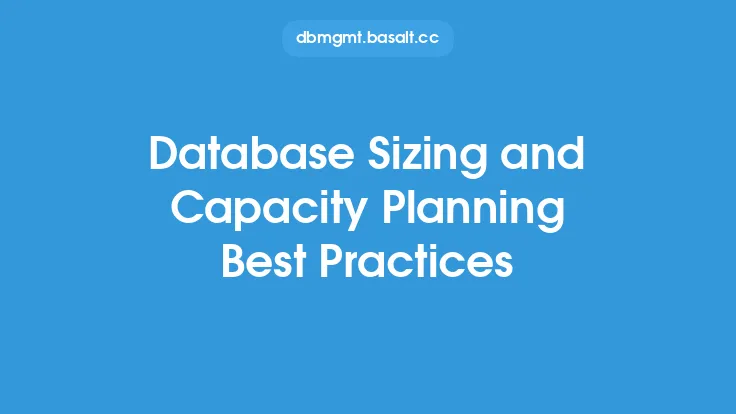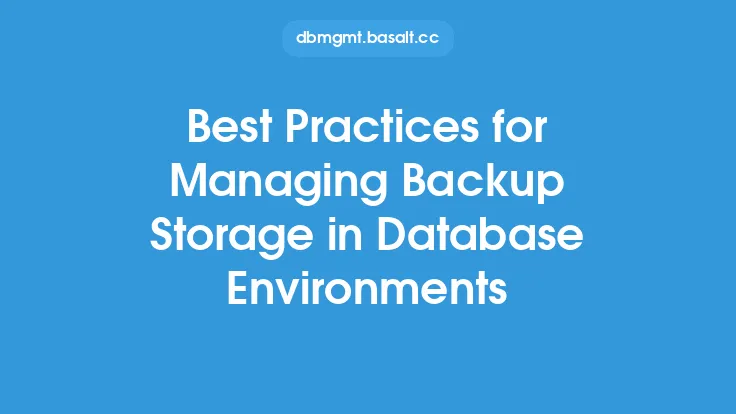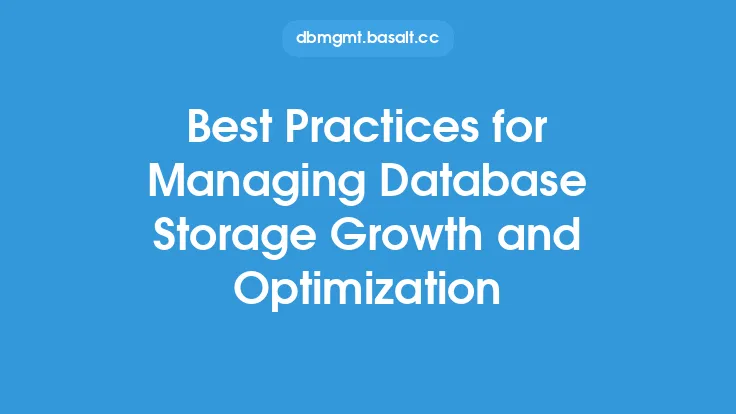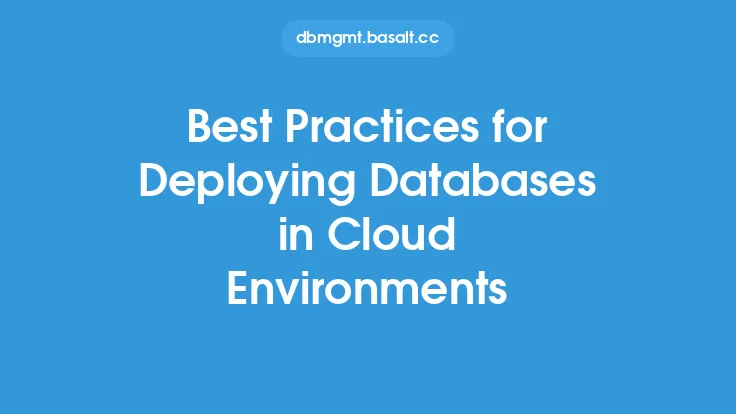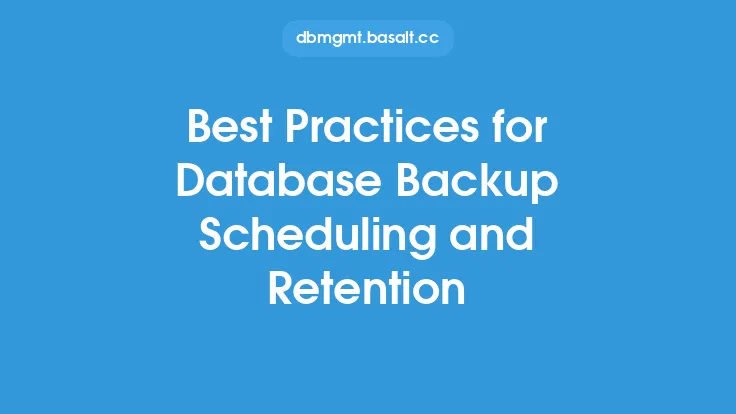When it comes to database performance optimization, storage capacity planning is a crucial aspect that can make or break the efficiency and reliability of a database system. As databases continue to grow in size and complexity, it's essential to have a well-planned storage capacity strategy in place to ensure that the system can handle the increasing demands of data storage and retrieval. In this article, we'll delve into the best practices for storage capacity planning for databases, exploring the key considerations, techniques, and tools that can help you optimize your database storage and ensure optimal performance.
Understanding Database Storage Capacity Planning
Database storage capacity planning involves predicting and preparing for the future storage needs of a database system. This includes estimating the amount of storage required to support the growing amount of data, as well as ensuring that the storage infrastructure can handle the increased load. Effective storage capacity planning requires a deep understanding of the database system, including its current storage usage, data growth rates, and performance requirements. By accurately predicting future storage needs, database administrators can ensure that the system has sufficient storage capacity to support business operations, prevent data loss, and maintain optimal performance.
Key Considerations for Storage Capacity Planning
When it comes to storage capacity planning, there are several key considerations that database administrators must take into account. These include:
- Data growth rates: Understanding the rate at which data is growing is critical to predicting future storage needs. This includes analyzing historical data growth trends, as well as considering factors such as increased user activity, new applications, and changing business requirements.
- Storage utilization: Monitoring storage utilization is essential to understanding how storage is being used and identifying areas for optimization. This includes analyzing storage usage patterns, identifying unused or redundant data, and optimizing storage allocation.
- Performance requirements: Database performance requirements, such as throughput, latency, and concurrency, must be considered when planning storage capacity. This includes ensuring that the storage infrastructure can handle the required workload and provide optimal performance.
- Data retention policies: Data retention policies, such as data archiving and purging, must be considered when planning storage capacity. This includes understanding the business requirements for data retention and ensuring that the storage infrastructure can support these requirements.
Techniques for Storage Capacity Planning
There are several techniques that database administrators can use to plan storage capacity, including:
- Capacity modeling: Capacity modeling involves creating a mathematical model of the database system to predict future storage needs. This includes analyzing historical data growth trends, as well as considering factors such as increased user activity and changing business requirements.
- Trend analysis: Trend analysis involves analyzing historical data growth trends to predict future storage needs. This includes using statistical models and machine learning algorithms to identify patterns and trends in data growth.
- What-if analysis: What-if analysis involves modeling different scenarios to predict the impact of changes on storage capacity. This includes analyzing the impact of increased user activity, new applications, and changing business requirements on storage capacity.
- Storage resource monitoring: Storage resource monitoring involves monitoring storage usage and performance in real-time to identify areas for optimization. This includes using tools such as storage monitoring software and performance metrics to analyze storage usage and identify bottlenecks.
Tools for Storage Capacity Planning
There are several tools that database administrators can use to plan storage capacity, including:
- Storage monitoring software: Storage monitoring software provides real-time monitoring of storage usage and performance, allowing database administrators to identify areas for optimization.
- Capacity planning tools: Capacity planning tools provide predictive analytics and modeling capabilities to help database administrators predict future storage needs.
- Performance metrics: Performance metrics, such as throughput, latency, and concurrency, provide insights into database performance and help database administrators optimize storage capacity.
- Data analytics platforms: Data analytics platforms provide advanced analytics and machine learning capabilities to help database administrators analyze data growth trends and predict future storage needs.
Best Practices for Storage Capacity Planning
To ensure effective storage capacity planning, database administrators should follow several best practices, including:
- Monitor storage usage and performance: Regularly monitoring storage usage and performance helps database administrators identify areas for optimization and predict future storage needs.
- Analyze data growth trends: Analyzing historical data growth trends helps database administrators understand how data is growing and predict future storage needs.
- Consider business requirements: Considering business requirements, such as data retention policies and performance requirements, helps database administrators ensure that the storage infrastructure supports business operations.
- Use capacity planning tools: Using capacity planning tools and storage monitoring software helps database administrators predict future storage needs and optimize storage capacity.
- Review and update plans regularly: Regularly reviewing and updating storage capacity plans helps database administrators ensure that the storage infrastructure continues to support business operations and optimal performance.
Conclusion
Storage capacity planning is a critical aspect of database performance optimization, and effective planning requires a deep understanding of the database system, including its current storage usage, data growth rates, and performance requirements. By following best practices, using the right tools, and considering key factors such as data growth rates, storage utilization, and performance requirements, database administrators can ensure that their database system has sufficient storage capacity to support business operations and maintain optimal performance.
